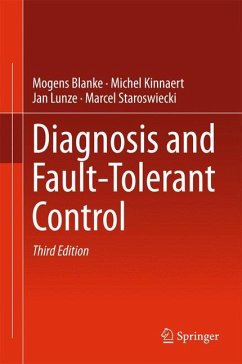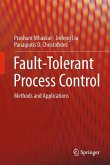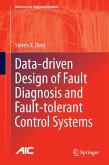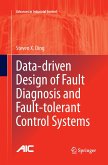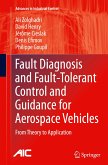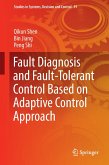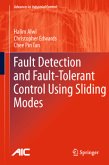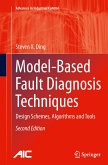Fault-tolerant control aims at a gradual shutdown response in automated systems when faults occur. It satisfies the industrial demand for enhanced availability and safety, in contrast to traditional reactions to faults, which bring about sudden shutdowns and loss of availability.
The book presents effective model-based analysis and design methods for fault diagnosis and fault-tolerant control. Architectural and structural models are used to analyse the propagation of the fault through the process, to test the fault detectability and to find the redundancies in the process that can be used to ensure fault tolerance. It also introduces design methods suitable for diagnostic systems and fault-tolerant controllers for continuous processes that are described by analytical models of discrete-event systems represented by automata.
The book is suitable for engineering students, engineers in industry and researchers who wish to get an overview of thevariety of approaches to process diagnosis and fault-tolerant control.
The authors have extensive teaching experience with graduate and PhD students, as well as with industrial experts. Parts of this book have been used in courses for this audience. The authors give a comprehensive introduction to the main ideas of diagnosis and fault-tolerant control and present some of their most recent research achievements obtained together with their research groups in a close cooperation with European research projects.
The third edition resulted from a major re-structuring and re-writing of the former edition, which has been used for a decade by numerous research groups. New material includes distributed diagnosis of continuous and discrete-event systems, methods for reconfigurability analysis, and extensions of the structural methods towards fault-tolerant control. The bibliographical notes at the end of all chapters have been up-dated. The chapters end with exercises to be used in lectures.
The book presents effective model-based analysis and design methods for fault diagnosis and fault-tolerant control. Architectural and structural models are used to analyse the propagation of the fault through the process, to test the fault detectability and to find the redundancies in the process that can be used to ensure fault tolerance. It also introduces design methods suitable for diagnostic systems and fault-tolerant controllers for continuous processes that are described by analytical models of discrete-event systems represented by automata.
The book is suitable for engineering students, engineers in industry and researchers who wish to get an overview of thevariety of approaches to process diagnosis and fault-tolerant control.
The authors have extensive teaching experience with graduate and PhD students, as well as with industrial experts. Parts of this book have been used in courses for this audience. The authors give a comprehensive introduction to the main ideas of diagnosis and fault-tolerant control and present some of their most recent research achievements obtained together with their research groups in a close cooperation with European research projects.
The third edition resulted from a major re-structuring and re-writing of the former edition, which has been used for a decade by numerous research groups. New material includes distributed diagnosis of continuous and discrete-event systems, methods for reconfigurability analysis, and extensions of the structural methods towards fault-tolerant control. The bibliographical notes at the end of all chapters have been up-dated. The chapters end with exercises to be used in lectures.
From the reviews: "The book by Blanke et. al covers several model-based failure detection techniques. ... A large portion of the book is devoted to presenting alternative modeling techniques. ... the book is suited for those who want to begin researching failure detection and want to learn about some of the ideas examined recently in the literature." (IEEE Control Systems Magazine, Vol. 25 (1), February, 2005) "There are many processes where overall failure would be expensive or even catastrophic and there is reason to use one of the techniques described in this book. ... Some of the material is in fact published here for the first time. ... The book under review must clearly be unrivalled as the standard textbook and reference source in its field." (Robotica, Vol. 22, 2004) "The book introduces the main ideas of fault diagnosis and fault-tolerant control. It gives a systematic survey of the new methods that have been developed in recent years and illustrates them by application examples. It is important to mention that all major aspects of fault-tolerant control are treated for the first time in a single book from a common viewpoint. ... With respect to fault accommodation and control reconfiguration, the book presents the current state of the art." (Tzvetan Semerdjiev, Zentralblatt MATH, Vol. 1023, 2003)

